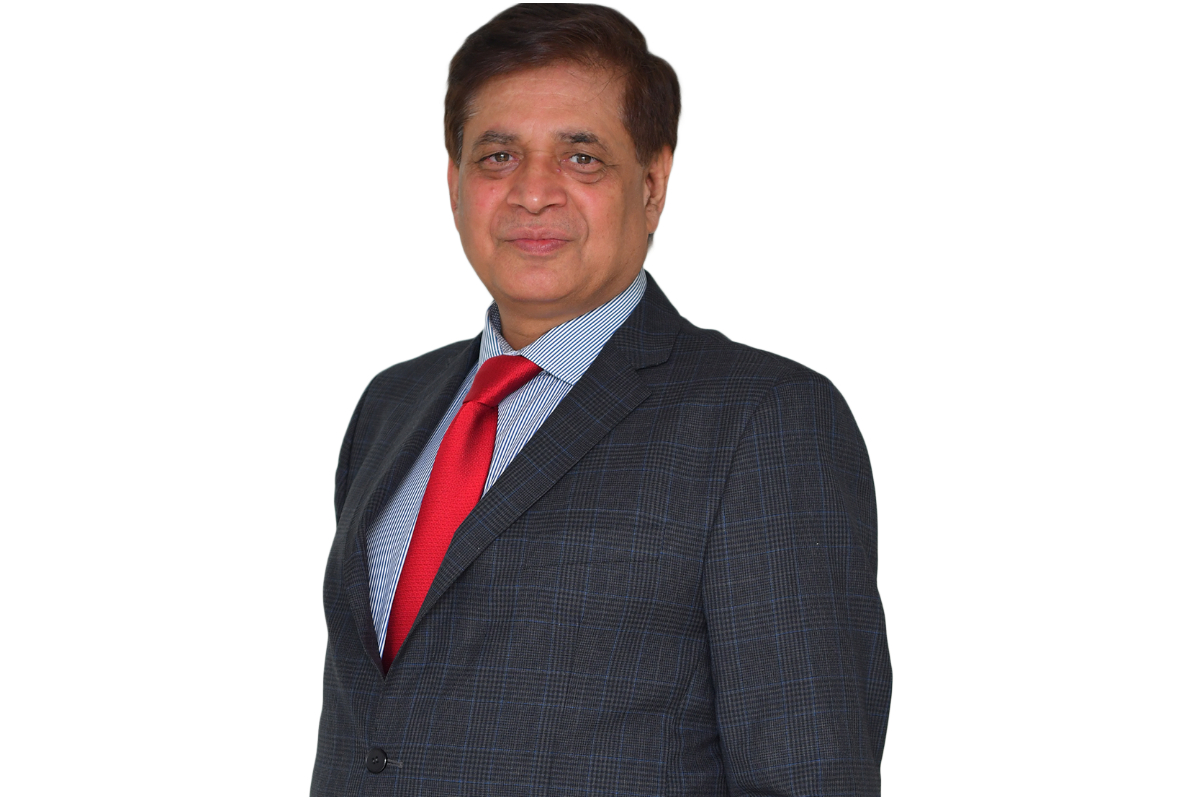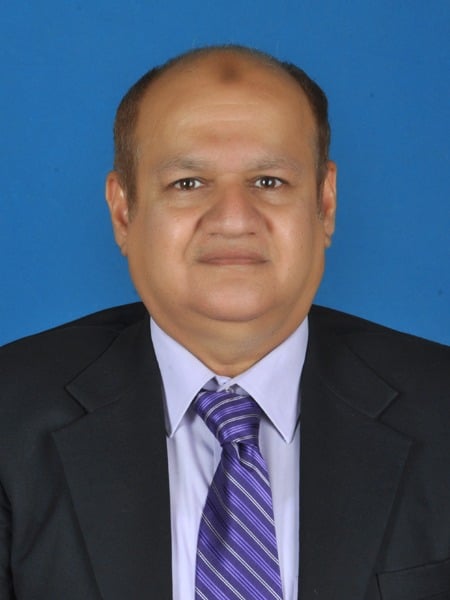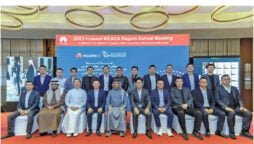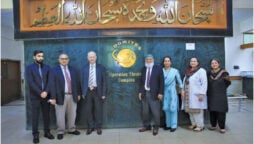
Technology Brings Handy Solutions
ISLAMABAD: Issues related to the common man are the real indicators of every economy and among them financial inclusion, health and education are interlinked, said Ghazanfar Azzam, president and chief executive officer of Mobilink Microfinance Bank Limited.
Unfortunately, in our case access to education, health and financial inclusion is below the regional and global standards.
We made a lot of progress in the last seven to eight years but we are still lagging behind the developed economies as far as financial inclusion is concerned.
In 2021 when we started the bank, only 12 per cent of the total eligible population had bank accounts. Now, this percentage has gone up over 50 per cent. Ideally, it should be 90 per cent plus. The traditional and conventional banks cannot do that. Around 13,000 to 15,000 brick and mortar bank branches did not have the capacity to cater to the needs of the 230 million population, he added.
This is where technology comes in with handy solutions. Now, you do not have to visit the brick and mortar branches anymore and can do banking through your own smart cellphone and this is happening globally.
That is why our slogan from day one was “Mera Phone Mera Bank”. Obviously, not big banks like the Habib Bank Limited (HBL) or any other can do it alone. You need to have technology partners who have cell connectivity because telecom is the one who have a reach to 80 per cent of the eligible population.
Therefore, when we started the business the idea was to make good use of cellphones to bring people on board and provide them with the basic mobile account, which they can use to send and receive money, maintain savings, pay utility bills or school fees and vice versa. Because of these easy solutions, we have a customer base of 42 million people as mobile accountholders.
The second challenge was how to go into digital lending. As of today, we have three to four million regular users who can borrow money by just clicking a button.
Azzam has several achievements to his credit in commercial, consumer, retail, Small and Medium Enterprises (SMEs) and micro-banking.
He has been an integral part of the establishment and successful running of two of the nation’s leading microfinance banks — FINCA (2008) and Mobilink Microfinance Bank (2012).
Under his capable leadership, the Mobilink Microfinance Bank Limited is positioned as the largest digital bank in Pakistan and has been awarded quite a few widely-coveted titles from the national and international finance and banking communities over the last decade.
In a candid interview with BOL News, he discusses the state of affairs of the microfinance institutions (MFIs) and what sort of challenges it is confronted with, at present.
Is your institution playing the role of a middleman or it is lending money through its own resources?
We are using the infrastructure of a telecom company, which is our parent company ‘Jazz’ but we also cater to the customers of other companies, as well. But as far as banking services are concerned, savings, lending or money transfer are being provided by the Mobilink Bank, which is owned by the same investors and is a sister concern.
We came up with a joint venture, which is called Jazz Cash and it is a common brand of Jazz and Mobilink Bank.
Mobilink previously used to be the name of our telecom company, as well. Both these companies have been owned by the same group.
How much money has your bank lent so far?
At present, we are mainly catering to the areas of Punjab, Sindh and Khyber-Pakhtunkhwa but being a national organisation, we also have branches in Quetta and Azad Jammu and Kashmir. There are two businesses, one is these touch point branches, where we serve farmers and, in fact, half of our customers are farmers who borrow money for agricultural inputs such as urea, seeds and pesticides.
We provide loans in the range of Rs100,000 to Rs350,000. We also provide loans to them to buy tractors and other agricultural machinery, because lately the State Bank of Pakistan (SBP) has enhanced our lending limit to Rs3 million/customer.
In the urban areas, we lend money to the SMEs, which are usually below the threshold of the commercial banks, so we serve across-the-board.
There is a general perception that the microfinance institutions charge higher interest rates, compared with conventional and traditional banks, despite the fact that you are catering to the less-privileged segment of the society?
I think it is by and large because of inadequate understanding of the micro-financing model and they just take one variable, which is the interest rate. Even the banks charge high interest rates on consumer financing, especially on credit cards, compared with the corporate loans.
In case of corporate loans, one relationship manager of a bank manages a few customers and, in some cases, just one of them borrowed over Rs1 billion. So, there volumes are high and the customers are very limited, whereas, in the case of microfinance, the majority of borrowers took loans in the range of Rs100,000 to 1,500,000 and that is why, despite one employee managing accounts of 300 to 400 customers his portfolio is very low.
Secondly, the microfinance banks spend a major chunk of their income to pay the salaries of youngsters, who have been hired from the communities where microfinance has been served. Therefore, one has to understand that it is labour intensive and that is why its cost of service is high.
The other variable is that the commercial banks have a strong deposit base, they raise money relatively cheaply. They pay depositors a lesser rate of return and invest in the government securities, which is totally risk-free and secured.
On these investments, they are getting a return of 17 to 18 per cent and even after paying 10 to 11 per cent to the depositor, they get a spread of 6 to 7 per cent without undertaking any risk. In the case of microfinance, the majority of farmers and other customers are unable to repay their loans on time. These loans are totally unsecured, so the risk of losing money is very high, so higher interest rates compensate for some of the losses we incurred.
Besides, our cost of funding is also high. We borrow money from the commercial banks and they charge even higher interest rates than what they get from the government securities because of the risk element involved in providing finance to the microfinance institutions.
Being a new entrant in the financial industry, the people are still reluctant to invest in microfinance banks, compared with big banks such as Habib Bank Limited or MCB Bank. So, the only way to attract them is by offering a higher rate of return, compared with the commercial banks. If you look at our balance-sheet, we are not making much money because of the higher cost of funding, the service delivery and the risk premium.
What is the ratio of non-performing loans in the portfolio of the microfinance banks?
Initially, the ratio of NPLs in the microfinance banks was minimal but since the Covid phase they all of a sudden ballooned. A lot of MFIs are in deep trouble and are incurring heavy losses mainly due to the floods and bad economic conditions. In fact, of the total 11 microfinance banks, only three are profitable and we are one of them.
What are the future plans to expand the customer base of your organisation?
If we have to grow our economy and provide jobs we have to increase the access to finance. In developed economies, anyone who wants to start a business easily gets access to credit if they have good business ideas. Here in Pakistan, it is difficult, of the 120 million adults, only four million have access to bank credit and even if we add 10 million customers of MFIs, it is just 14 million and 11 to 12 per cent of the total population.
Encouraging the younger generation for entrepreneurship is the only way to overcome the economic problems because the government cannot provide jobs to everyone. We have to give them access to credit from the banks and other financial institutions.
Besides, we put a lot of emphasis to bring women’s businesses into the mainstream. We also help them have their websites instead of physical stores, where they can display their goods and can link e-commerce operators like Daraz to sell their products. Now, a woman sitting in Islamabad or even in a village can sell her products in Karachi or Lahore through Daraz.
We up-skilled 1,000 plus women customers under the Women Inspirational Network (WIN) programme and also inbuilt-free Learning Management System (LMS) in Dost app for women.
Lastly, are you satisfied with the performance of the State Bank as the regulator?
If we judge them with regional standards then they are doing a fantastic job, as a well-managed and forward looking institution. However, if we look at them as what needed to be done, then there is a lot of work still pending and as I mentioned earlier the access to finance in terms of percentage of the population is still miserable.
By promoting the microfinance institutions, the central bank will be able to add 10 million customers in the financial sector but to further enhance the financial inclusion, it should promote provincial and cooperative banks and regulate them well. There should be no barriers on their entry but once they start operations the SBP should closely regulate and monitor them.
Catch all the Economic Pulse News, Breaking News Event and Latest News Updates on The BOL News
Download The BOL News App to get the Daily News Update & Live News.








 Read the complete story text.
Read the complete story text. Listen to audio of the story.
Listen to audio of the story.